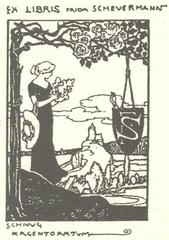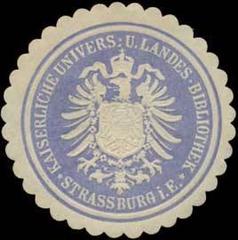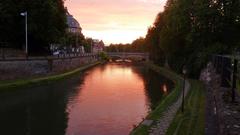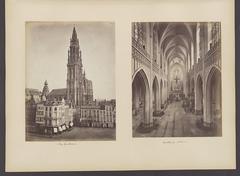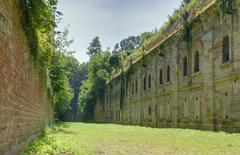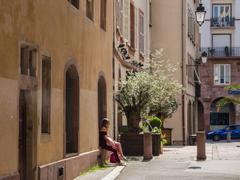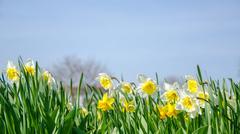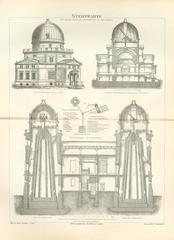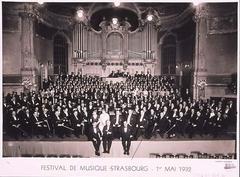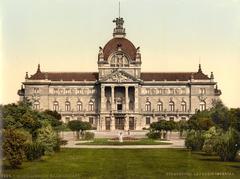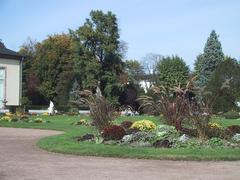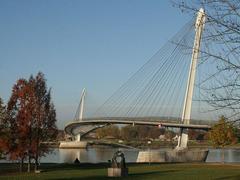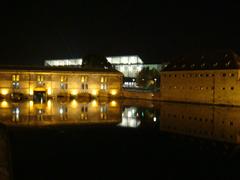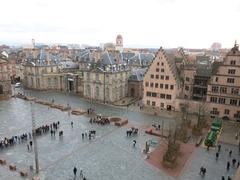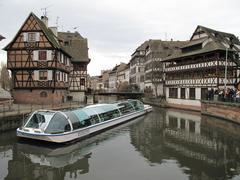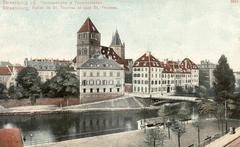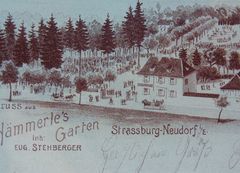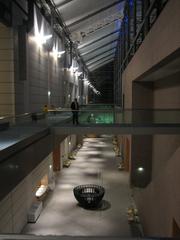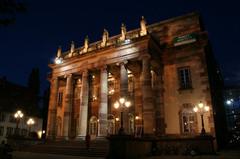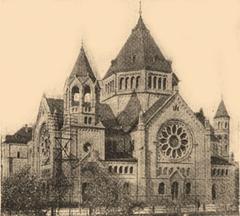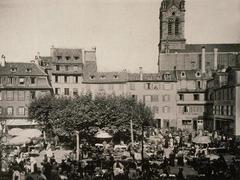
Jardin Botanique De L’Université De Strasbourg: Visiting Hours, Tickets, and Travel Guide
Date: 04/07/2025
Introduction
The Jardin Botanique de l’Université de Strasbourg is a remarkable living museum and historical site in the heart of Strasbourg. Established in 1619, it stands among France’s oldest botanical gardens and plays a vital role in education, research, and the conservation of plant biodiversity. Spanning approximately 3.5 hectares, the garden invites visitors to explore its extensive plant collections, historic greenhouses, and tranquil thematic landscapes. With free daily access, wheelchair-friendly pathways, and a location near other notable Strasbourg historical sites, it is a must-visit destination for tourists, families, students, and plant enthusiasts alike. This guide details the garden’s history, cultural significance, visitor information, and practical tips to help you plan a rewarding visit (Jardin Botanique de Strasbourg - Visit Strasbourg; Jardin Botanique Unistra; BGCI).
Table of Contents
- Introduction
- Historical Overview
- Visitor Information
- Garden Layout and Highlights
- Educational and Scientific Mission
- Cultural and Community Engagement
- Research and International Collaboration
- Visitor Experience and Events
- Frequently Asked Questions (FAQ)
- Plan Your Visit
- References and Further Reading
Historical Overview
Early Foundations (1619–18th Century)
Founded in 1619 within the Protestant Academy of Strasbourg, which became the University of Strasbourg two years later, the garden was initially conceived as a “jardin médicinal” to support the education of medical students and apothecaries (Wikipedia). Located in the Krutenau district, it quickly established itself as a center for scientific inquiry and the study of medicinal plants.
19th Century Transformation
After the Franco-Prussian War and the annexation of Alsace-Lorraine, the garden relocated in 1884 to its current site behind the Palais Universitaire at 28 rue Goethe. Under the direction of botanist Anton de Bary, it became a model botanical institution, featuring modern research facilities, an arboretum, rock gardens, and innovative greenhouses (BGCI; Visit Strasbourg).
20th Century Challenges and Renewal
Throughout the 20th century, the garden faced neglect and damage, including a devastating hailstorm in 1958. Most historic greenhouses were demolished in the 1960s, except for the iconic dodecagonal “serre de Bary,” which was partially restored in 1993 (Jardin Botanique Unistra). New facilities were built to accommodate expanding research and educational activities.
Conservation and Heritage Recognition
Recognized for its scientific and cultural significance, the garden was designated a Monument Historique in 1990, and the serre de Bary received its own classification in 1993. The label “Jardin Remarquable” was awarded in 2004, affirming its exceptional heritage. The Association des Amis du Jardin Botanique de l’Université de Strasbourg (AAJBUS), established in 1983, supports conservation and educational outreach (Wikipedia).
Collections and Scientific Legacy
Today, the garden boasts over 6,000 plant species, including rare and endangered specimens. Its collections encompass an arboretum, systematic and alpine gardens, themed trails, and several greenhouses. The garden’s herbarium, with over 400,000 specimens, and ongoing research projects ensure its status as a leading center for botanical science (BGCI; Visit Strasbourg).
Visitor Information
Address and Opening Hours
- Address: 28 rue Goethe, 67000 Strasbourg, France
- Opening Hours:
- April–October: 9:00 AM – 6:00 PM
- November–March: 9:00 AM – 4:30 PM
- March–April (some years): 15:00 – 18:00
- Closed on major holidays; check official website for seasonal variations.
Tickets and Accessibility
- Admission: Free for individuals and small groups; guided tours and some special exhibitions may require advance booking and fees.
- Accessibility: Wheelchair and stroller-friendly paths, accessible restrooms, and seating throughout the garden.
- Travel Tips:
- Tram: Lines C or E, stop “Observatoire” or lines A and D, stop “Université.”
- Bicycle Parking: Available at the main entrance.
- Car: Limited parking on-site; public transport recommended.
Nearby Attractions
The garden’s central location makes it ideal for combining with visits to the Palais Universitaire, Strasbourg Cathedral, Petite France, Musée Zoologique, and the Observatoire astronomique—all within walking distance (je-visite-strasbourg.fr).
Garden Layout and Highlights
Arboretum
The arboretum features over 500 tree and shrub species, including ancient ginkgo biloba, sequoias, dawn redwoods, and other “living fossils.” In autumn, the colorful foliage creates a striking landscape.
Greenhouses
- Tropical Greenhouse: Towering palms, banana trees, orchids, and bromeliads create a rainforest environment.
- Mediterranean Greenhouse: Olive trees, citrus, and aromatic herbs from sunny climates.
- Succulent House: Cacti and succulents from arid regions.
Systematic and Alpine Gardens
- Systematic Garden: Over 1,200 species arranged by botanical families for educational exploration.
- Alpine Garden: More than 500 species from mountain regions, including saxifrages and edelweiss.
Medicinal, Useful, and Rare Plants
- Over 250 species used in medicine, dyeing, and cooking are on display. The garden is committed to conserving rare and endangered species such as the Wollemi pine and rare orchids.
Educational and Scientific Mission
As a university botanical garden, the Jardin Botanique serves as a living classroom and research center. It supports plant biology, ecology, and conservation research, provides hands-on learning for students and the public, and participates in seed banking and international conservation networks. Special exhibitions and interactive trails highlight plant adaptation, evolution, and the importance of biodiversity (Jardin Botanique Unistra).
Cultural and Community Engagement
The garden hosts art-science exhibitions, photography shows, and cultural events like “Des Araignées et des Humains (D.A.D.H.).” It is also a key venue for university-wide biodiversity initiatives and annual events such as the European Heritage Days.
Research and International Collaboration
The garden collaborates with national and international partners on plant biology, ecology, and conservation research. Seed exchange programs and joint research projects enhance its scientific impact (BGCI).
Visitor Experience and Events
Interactive signage, guided tours, and self-guided thematic trails enrich each visit. Seasonal highlights include spring blossoms, summer perennial borders, autumn foliage, and winter greenhouse displays. The garden also features a gift shop with botanical books and souvenirs.
Frequently Asked Questions (FAQ)
Q: What are the Jardin Botanique de Strasbourg’s visiting hours?
A: Generally 9:00 AM to 6:00 PM (April–October) and 9:00 AM to 4:30 PM (November–March). Some seasonal variation—check the official website.
Q: Is there an admission fee?
A: Admission is free for individuals and small groups; guided tours may have a fee.
Q: Is the garden accessible?
A: Yes, most pathways are wheelchair accessible.
Q: Are pets allowed?
A: Only service animals are permitted.
Q: Can I take photographs?
A: Yes, photography for personal use is permitted. Professional shoots require permission.
Q: How do I get there by public transport?
A: Tram lines C or E, stop “Observatoire,” or lines A and D, stop “Université.” Bicycle and limited car parking are available.
Plan Your Visit
- Check the latest updates on opening hours and events on the official website.
- Consider booking a guided tour for a deeper understanding.
- Download the Audiala app for audio guides and interactive maps.
- Combine your garden visit with other Strasbourg historical sites.
- Follow the garden on social media for news on exhibitions and workshops.
References and Further Reading
- Jardin botanique de l’université de Strasbourg, Wikipedia
- Le Jardin Botanique, Visit Strasbourg
- Jardin botanique de Strasbourg, BGCI
- Historique du Jardin Botanique, Jardin Botanique Unistra
- Informations pratiques, Jardin Botanique Unistra
- Visite guidée, Jardin des sciences - Université de Strasbourg
- Jardin Botanique de Strasbourg visiting hours
- je-visite-strasbourg.fr









